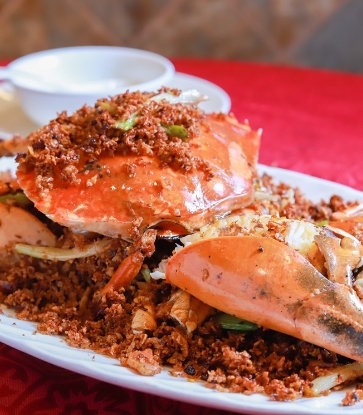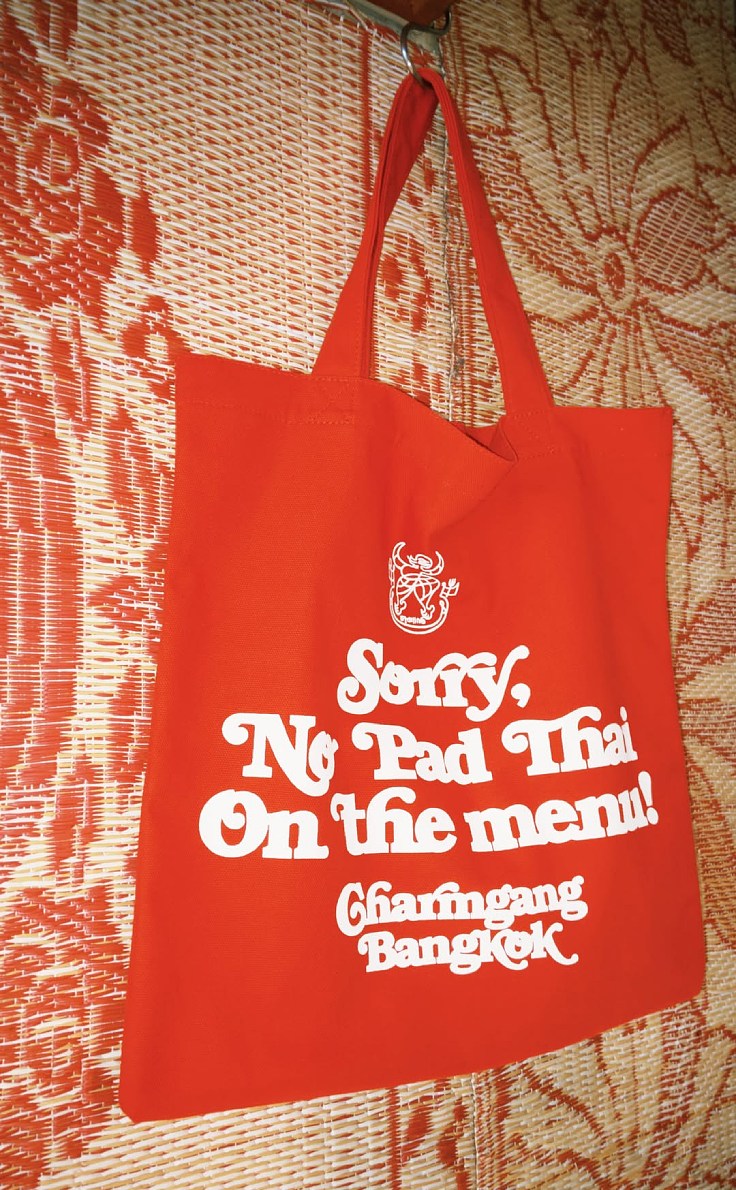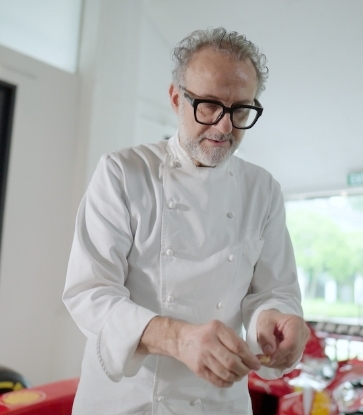Did you know there are over 300 types of pasta? Some of the most common forms of pasta that have become international household names may include spaghetti, lasagna and penne, but the carbohydrate-rich food, which originated in Italy, comes in many more shapes and varieties of which the names often vary from locale to locale. For example, the bow-tie or butterfly-shaped pasta of farfalle is known as strichetti in the Italian city of Modena.
Depending on their shapes—long (spaghetti) and short (tortiglioni); flat (fettuccine) and hollow (macaroni); sheet-like (lasagna) or twisted (fusilli), as well as stuffed ones like ravioli and tortellini—and sizes, each pasta variety can be served with an array of sauces, in a soup or baked in the oven.
The word “pasta” came from the Italian word “paste”, which refers to the dough made from durum wheat flour mixed with water or eggs—simple household staples that have been around for centuries.
The origin of pasta remains a mystery: some believe that Venetian merchant Marco Polo brought pasta to Italy from China; others accept the theory that the Arab invasions of the 8th Century brought dry pasta to Sicily.
Regardless of how pasta came into being, the Italians have perfected a myriad of delicious pasta recipes that require only a few ingredients, making it one of the simplest—and most versatile—dishes to prepare anywhere in the world.
Think you know everything about pasta? Expand your pasta vocabulary with our glossary of the most common types of pasta and pasta-related terms—the pasta-bilities are endless!
Happy World Pasta Day!
A for Al dente
“Al dente! Al dente!” This constant cry of Italian chefs has permeated the foodie world. This phrase, which translates to “to the tooth”, is part of pasta scripture according to Recipes of All Nations by Countess Morphy from 1935. She describes how this Italian staple must be “sufficiently firm to be felt under the tooth” -- firm, but not hard. Al dente pasta should have this firm yet chewy texture to its core. What that means exactly has been a continuous debate among chefs. What is not cooked enough for some is perfectly done for others. Nevertheless, this phrase epitomises the true essence of Italian food. Not so sure? Then try having a steaming plate of pasta with a lovely glass of wine from Veneto and let the conversation commence.
B for Bolognese
Contrary to common belief, spaghetti Bolognese is not a native Italian dish. The Bolognese sauce ("ragù alla bolognese" in Italian) comes from the city of Bologna, where it’s served with tagliatelle, not spaghetti. The word "ragù" refers to a meat-based pasta sauce, which comes in different variations depending on the region.
Today, adaptations of the dish like spaghetti Bolognese have become popular worldwide, especially in British and German homes.
C for Carbonara
A humble dish from Roman descent, a classic carbonara comprises the simplest ingredients such as pasta, eggs, guanciale (cured pork cheek), cheese, and black pepper. And yet, this dish demands a swift hand when tossing the egg mixture and the pasta together in order to achieve a thick sauce rather than scrambled eggs. A successful result yields a savoury plate of pure pasta satisfaction, highlighting the richness of egg yolks, the creaminess of cheese, and the smoky flavours of guanciale.
D for Ditalini
Ditalini pasta is shaped like a small tube and is also referred to as “tubettini.” These tiny short pastas are often used in soups, like a minestrone soup of Italian origin made with vegetables, including beans, onions, celery, carrots, stock, croutons, and tomatoes.
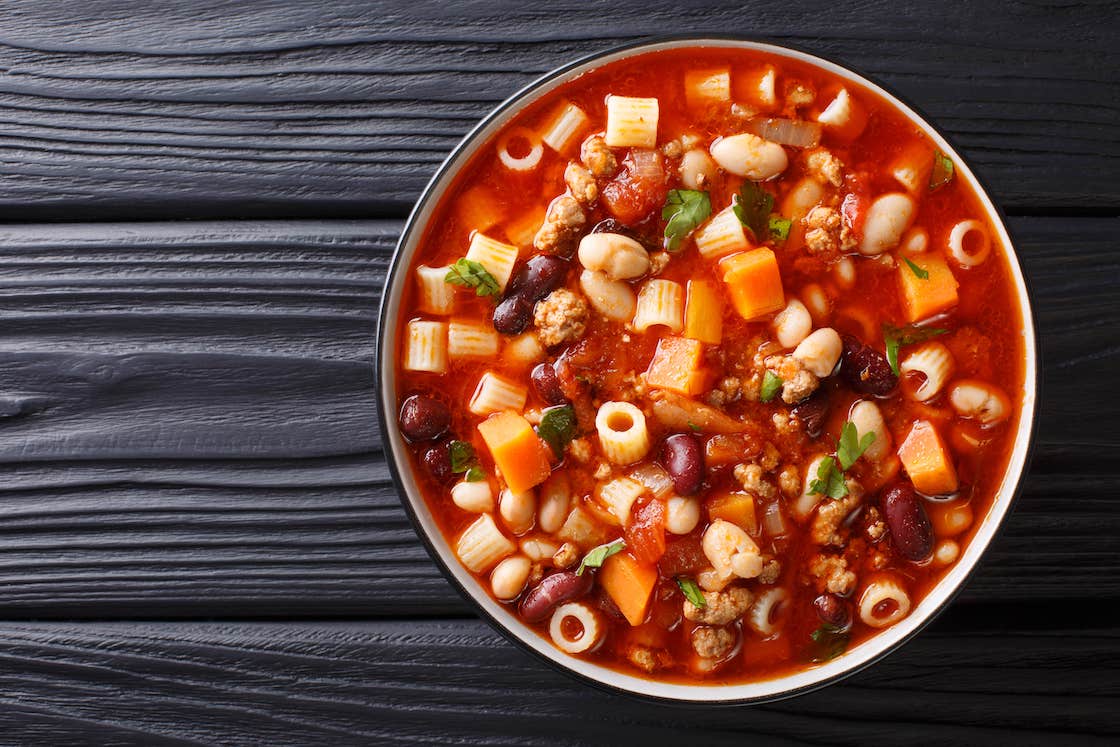
E for Eggs
Eggs are a crucial ingredient in making fresh pasta in order to achieve a silky, tender texture. Eggs also affect the amount of elasticity in a pasta, especially when making stuffed ones such as ravioli. Compared to the store-bought variety, which normally do not contain eggs and take time to cook, pastas that are made fresh with eggs are usually ready in less than a minute.
F for Fettuccine
Fettuccine is one of the most beloved pastas around the world; it is shaped like long, flat ribbons. It is similar to tagliatelle but a bit narrower. At Seoul's Italian restaurant Doughroom, chefs make fresh fettuccine with egg and flour every day.
G for Gnocchi
One of the biggest misconceptions about gnocchi is that they are a form of pasta, when in fact, they are not. With potatoes as its main component, gnocchi is part of the Italian dumpling family, and is usually richly sauced with butter, sage, and Parmesan. At one-MICHELIN-Starred Italian restaurant Garibaldi in Singapore, chef Roberto Galetti cooks a vanilla-scented potato gnocchi with mascarpone cheese.

H for Hazan, Giuliano
Giuliano Hazan is a food writer as well as educator just like his mother Marcella Hazan, who is considered to be the godmother of Italian cuisine who has introduced traditional Italian cooking culture and techniques to the United States. Hazan has published several award-winning cookbooks including The Classic Pasta Cookbook and Everything Night Italian, and pasta is certainly one of the core themes of his writing and sharing. Besides writing, he also hosts cooking institutes in Italy and Florida, as well as online courses.I for Italy
Unsurprisingly, Italians consume the most pasta in the world. According to the International Pasta Organisation, the average Italian consumes 23.1kg of pasta per year, while Tunisia (17kg) and Venezuela (12kg) come second and third on the list of global pasta consumption.
J for Jàcculi
Jàcculi, or Jàccoli, is a special type of pasta that originated from Sabine Hills in the centre of Italy. Jàcculi is a long, fat spaghetti which looks similar to pici from Tuscany.

K for Kamut
Also known as "oriental wheat," kamut is an ancient grain that is marketed as a healthier alternative to regular pasta. Because it contains more nutrients, is higher in protein, and lower in gluten, kamut pasta has also been a popular choice for the health-conscious crowd. It carries a nuttier flavour, similar to whole-wheat grain pasta, and is typically enjoyed tossed with vegetables such as broccoli, tomatoes, and olives.
L for Lasagna
Lasagna may have its origins in ancient Greek mythology. There is reference to "laganon,” strips cut from a large sheet of dough. From there, Romans cooked "lagane," as Apicio recorded in his writings during the first century AD how this pasta was used to cover containers and pie fillings. Then tomatoes made their debut first in Neapolitan meals in the 1880s.
This all culminated in the layered lasagna we know today thanks to the brilliance of Francesco Zambrini, a chef from Bologna. In the 19th century, he published a cookbook with a recipe calling for alternating layers of lasagne and cheese. "Lasagna is best served with a Brunello di Montalcino red wine, roasted chicken and potatoes. This is a classic Italian Sunday lunch,” explains Francesco Lenzi of Nonna Nella by Lenzi and Lenzi Tuscan Kitchen in Bangkok, both listed in the MICHELIN Guide Thailand 2021.
M for Macaroni
"Like many other things exported from Italy to America in the old days, many names were wrongly renamed. In Italy, we call it maccheroni. Macaroni is the wrong American translation,” says Alessandro Frau of MICHELIN-listed Acqua in Phuket.
"I like mixing maccheroni with extra virgin olive oil and parmigiano-reggiano cheese. It is so simple and yet the most delicious method. And don’t forget that the pasta must be al dente!” Macaroni, also more authentically spelled "maccheroni," is a dried pasta formed into short tubes. It is especially popular in the US as the classic American mac & cheese and is usually made from durum wheat flour, native to the Mediterranean and the Middle East.
Author and Italian chef Clifford A. Wright explains that macaroni was first favoured by the upper class and the Jewish community in the 1600s. However, the word “macaroni” most likely originates from the ancient Greek word "macaria” referring to a barley soup served to honour the dead and with the possible meanings "blessed dead” or "blessed and happy."

N for Norma
Pasta alla Norma is a vegetarian dish from Catania, a city on the eastern coast of Sicily. It is a tribute to the famous composer Vincenzo Bellini, whose opera “Norma” was considered one of his greatest works.
Packed with Mediterranean flavours, this tasty pasta dish is made with tender eggplant and fresh tomatoes, finishing with basil leaves and a generous sprinkling of grated ricotta salata cheese.
O for Orecchiette
Originated in Puglia, Orecchiette literally means “little ears” in Italian. Its shape is round with thinner middle part and slightly thicker edges, which gives this pasta a unique, chewy texture.
P for Pesto
Pesto, or “pesto alla genovese” in Italian, is said to have its beginnings in Europe’s largest city in the Middle Ages, Genoa. It is made by pounding garlic, pine nuts, salt, basil, and parmigiano-reggiano or pecorino sardo cheese and then blending it with olive oil. The name for this delicious sauce comes from “pestâ” or “pestare”, which meant “to pound” in Genoa. The ancient Romans had a similar dish, “moretum”. Feeling hungry? Chef Francesco Deiana of MICHELIN-listed La Dotta in Bangkok invites you to practice making homemade pesto with an easy DIY kit you can order from the restaurant.

Q for Quadrucci
While it is not a typical pasta found in restaurants and in groceries, quadrucci is often made with leftover egg pasta dough, rolled until almost translucent, and then cut into small squares. When translated from Italian, quadrucci refers to “little squares”, and in Italy, they are often fed to children because of their small shape. When served, quadrucci usually come swimming in creamy, velvety soups or in clear broths to add bite; they can also be boiled and served with peas and prosciutto or pancetta, topped with cheese.

R for Ravioli
One of the most beloved stuffed pasta varieties, Ravioli is a classic dish originated in the Northern part of Italy. At Hong Kong's one-MICHELIN-starred Tosca di Angelo, chef Angelo Agliano reinterprets this pasta with handmade ravioli and fillings from the South of Italy, incorporating the texture of buffalo mozzarella, smokiness of stracciatella cheese, and creaminess of burrata to create “an explosion of flavours.”
“Ravioli is the epitome of what a traditional Sunday looks like in an Italian household. I used to wrap ravioli with my grandmother and mother so it reminds me of the perfect family time,” says Agliano.

S for Scialatielli
At Grand Hyatt Hong Kong’s Italian restaurant Grissini, scialatielli is handmade in-house daily to create Gli Scialatielli Carciofi e Bottarga, a pasta dish made with artichoke, lemon olive oil, anchovy extract and bottarga.
“It’s an ode to one of my favourite dishes from Sardinia—a salad made with raw artichoke and dried mullet roe. That’s the flavour profile I wanted to replicate with this dish,” says chef de cuisine Marcello Scognamiglio.
Originated on the Amalfi coast, scialatielli is a traditional pasta from the Campania region, one of the most common recipes is “Scialatielli ai frutti di mare” (mixed shellfish, cherry tomato, parsley).
“There’s a small family-run restaurant in Naples, with tables literally placed in the middle of the walking street, near an ancient seaside village. They are famous for having the best seafood in the town. I simply love to go there and have my scialatielli with mussels, it’s just great!”
T for Tortellini
Originated from the Italian region of Emilia, Tortellini are similar to dumplings stuffed with a mix of meat and cheese.

U for Umberto Bombana
Umberto Bombana is the chef-owner of 8½ Otto e Mezzo - BOMBANA, the world’s first and only Italian restaurant outside of Italy to receive three MICHELIN stars in the MICHELIN Guide Hong Kong Macau 2012—a recognition the restaurant has retained for ten consecutive years.
Following the success of 8½ Otto e Mezzo - BOMBANA, the Bergamo native opened the Macau outpost of the same name at The Galaxy Macau in 2015, which has been holding one MICHELIN star for six successive years.
RELEVANT: A Look Back at 12 years of MICHELIN Guide Hong Kong Macau
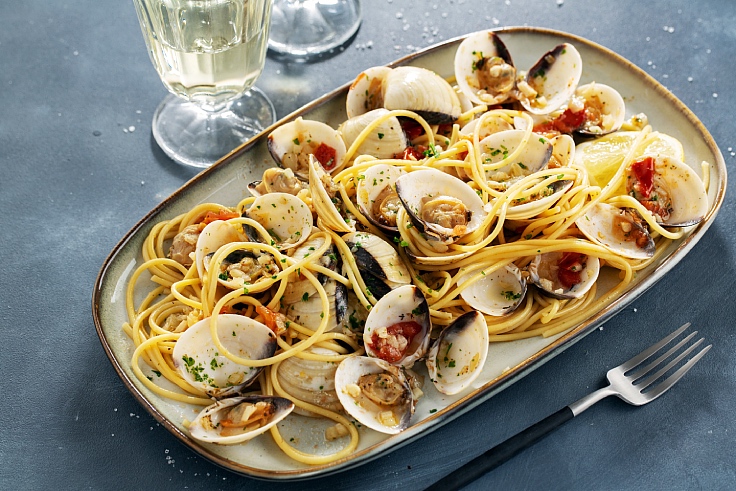
V for Vongole
You’ll see this traditional Neapolitan dish all over Campania, especially in the summer. "Spaghetti alle vongole," literally, "spaghetti with clams," is popular all along the Italian coast. It is simple to make with garlic and olive oil, or “aglio e olio," possibly with some fresh chillies, using spaghetti or another long pasta.
The stars of the dish are the mussels or carpet shell clams, cooked in a large pan until they open up and let the sea of flavours into the sauce. It is then quickly combined with perfectly prepared pasta and topped with finely chopped parsley. There is also a variation with tomatoes. But, whatever version you prefer, spaghetti alle vongole is best enjoyed by the sea.
W for Wagon Wheels
Wagon Wheels pasta is also called "rotelle," meaning wagon wheels in Italian. This pasta has a unique chewy texture and carries sauce easily.

X for Extruder
After the dough is ready, one can use any tools available to make pasta shapes including hands. An extruder is a machine that facilitates that process. Different dies make different types and shapes possible—long or short, oval or flat, even irregular shapes such as lumache (shell-shaped pasta).
Y for Yolk
One of the differences between fresh pasta and dried pasta lies in the use of eggs: fresh pasta usually contains eggs as a main ingredient; while dried pasta is made of different types of flours, salt, and water. Factors such as the types of egg and the ratio of egg to water make a difference to the texture of fresh pasta. Extra yolk in the making process will make the pasta carry a golden colour and rich flavour. Yolk can also be a perfect sauce, as in the famous Carbonara where the raw egg yolk is used along with Parmesan cheese and pepper to give a rich and silky sauce.
Z for Ziti
Ziti is a short, tubular pasta originated in the Southern Italy. Traditionally, people break the pasta before cooking and it is usually served at weddings or holidays. ZIti goes well with tomato sauces, mozzarella cheese or au gratin.
CONTINUE READING: Five Ingredients To Try This Year





